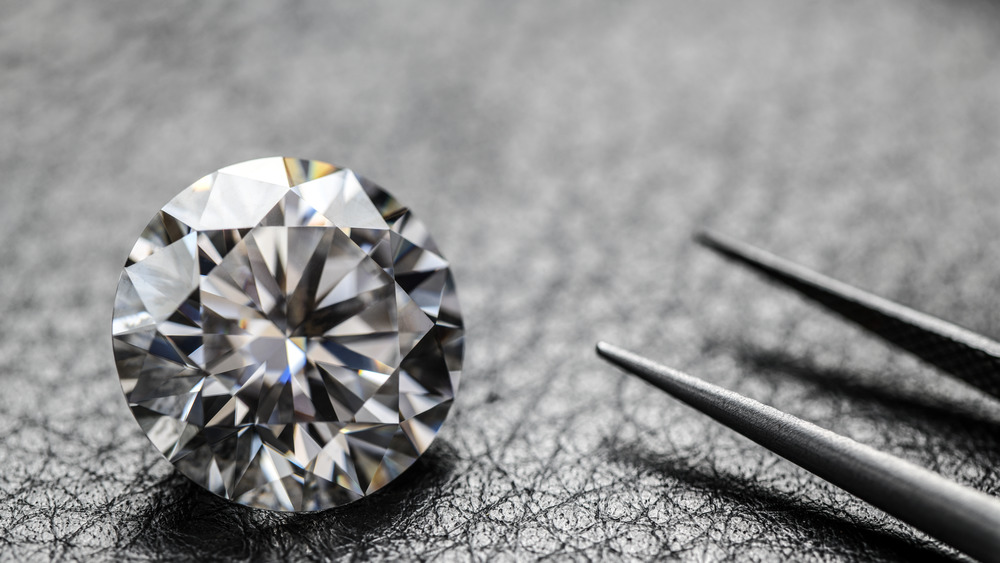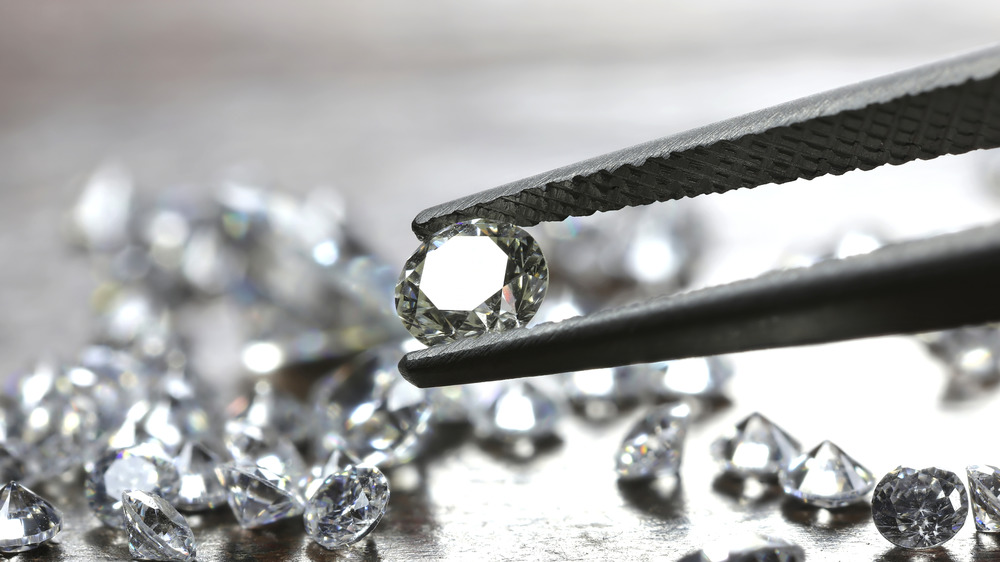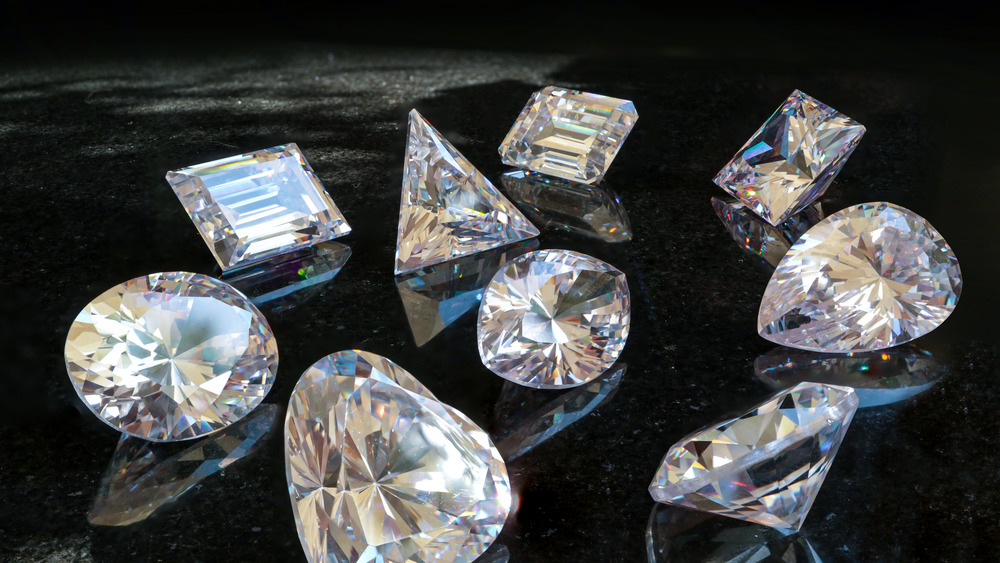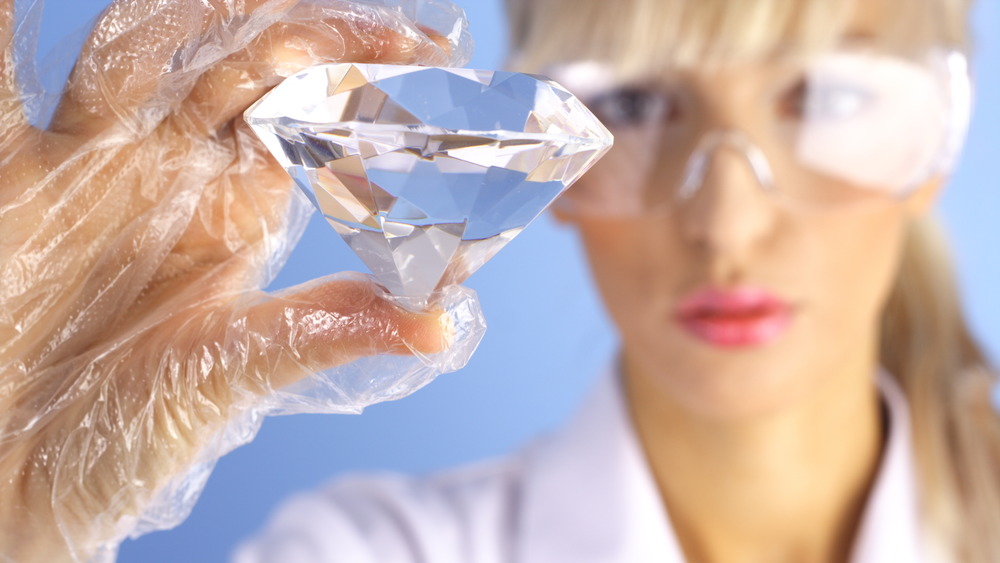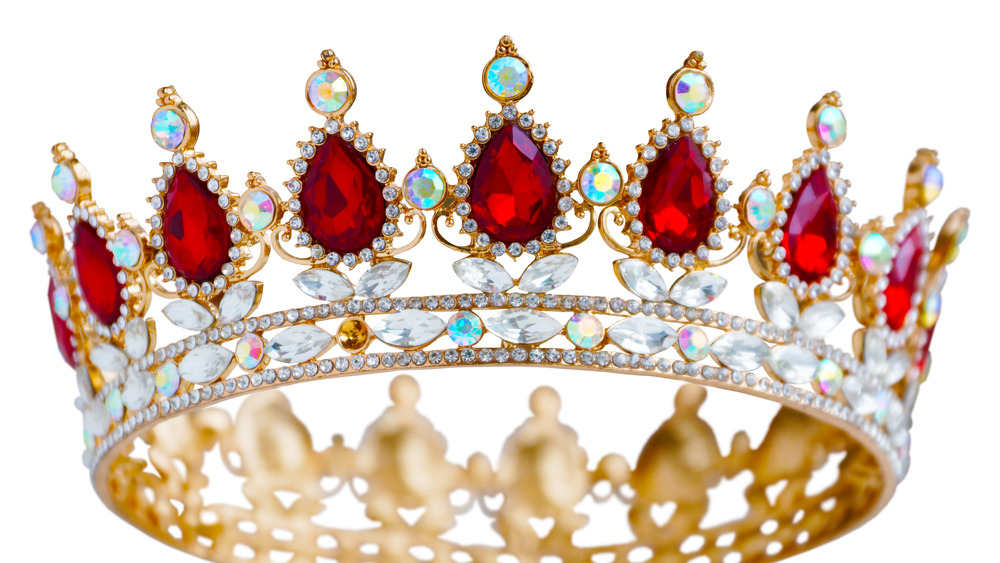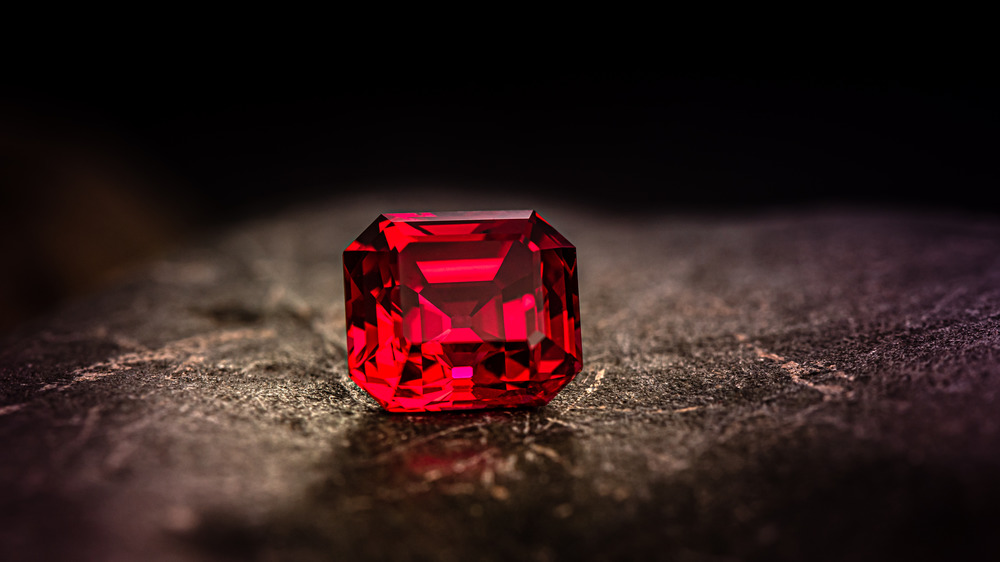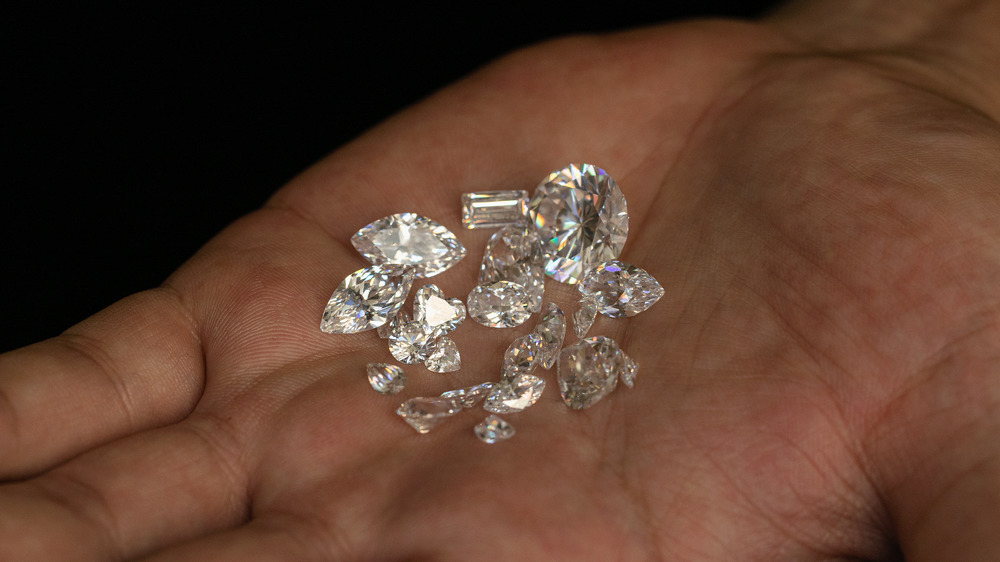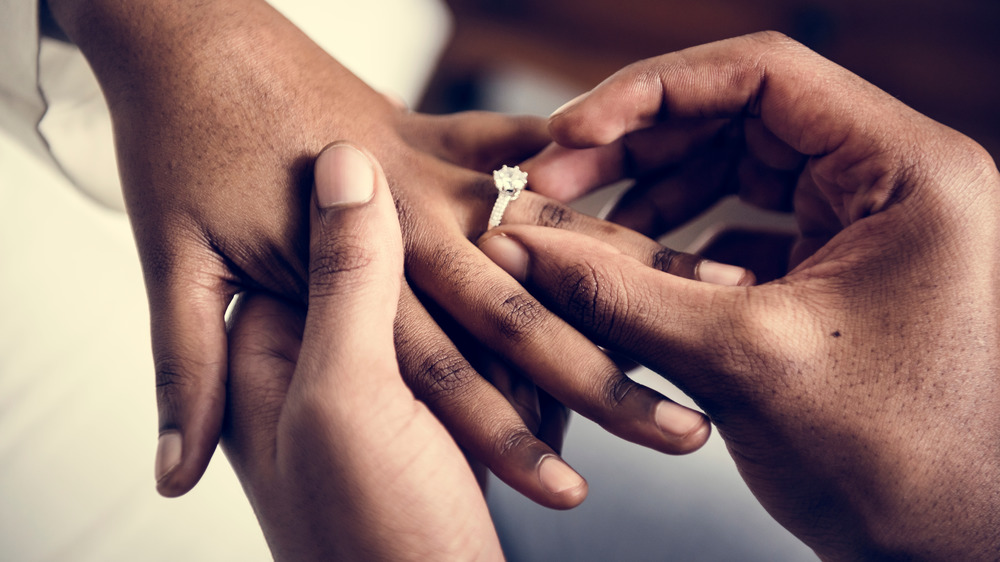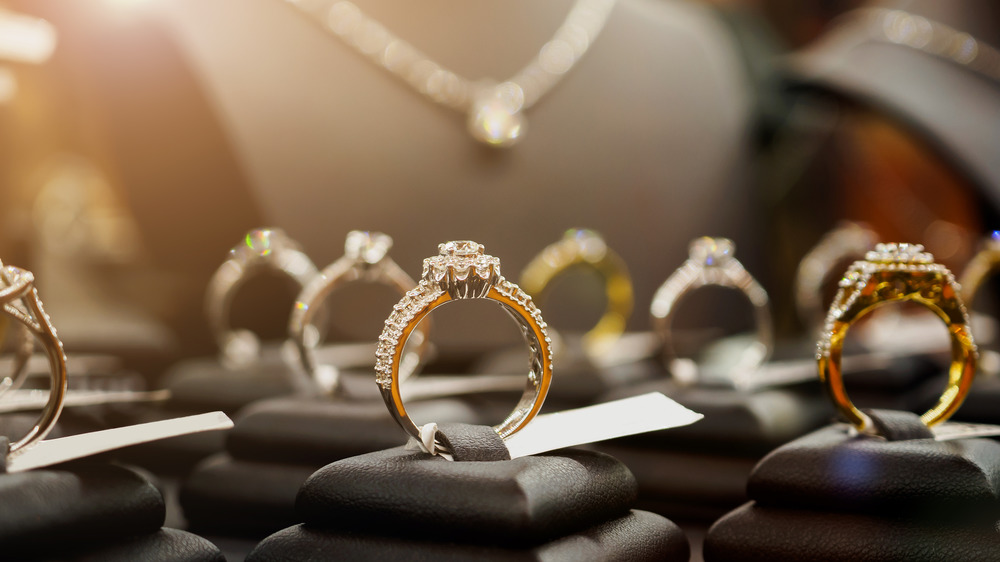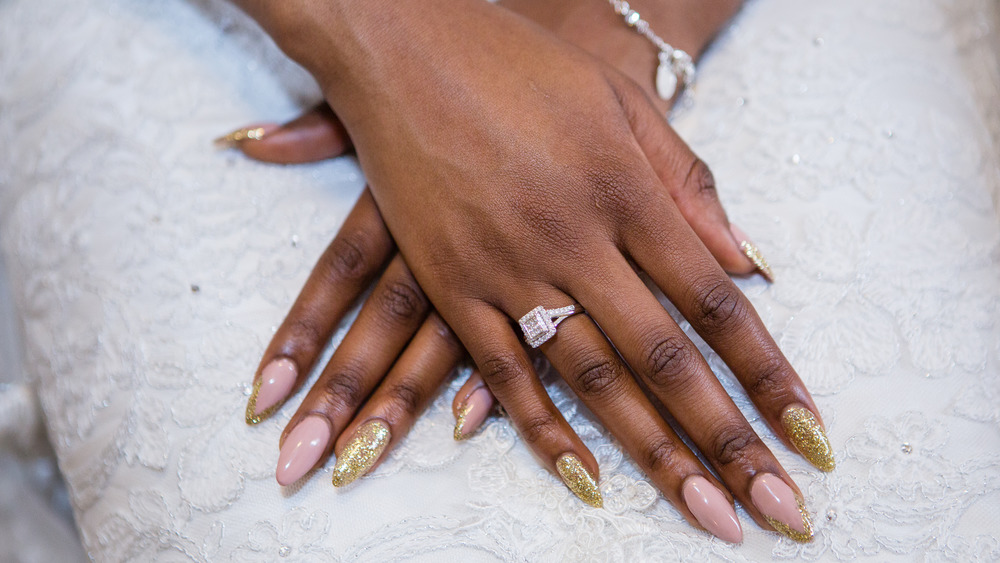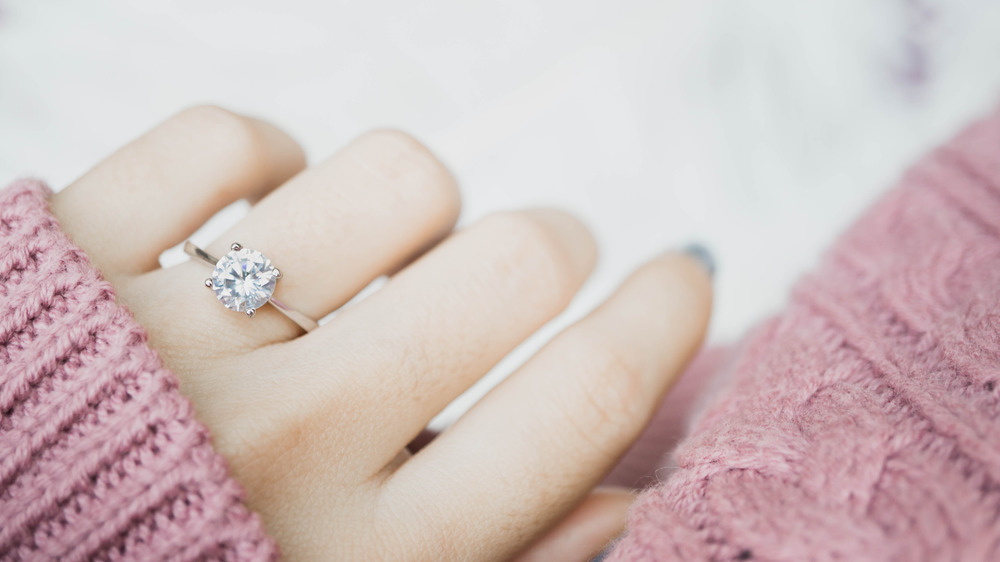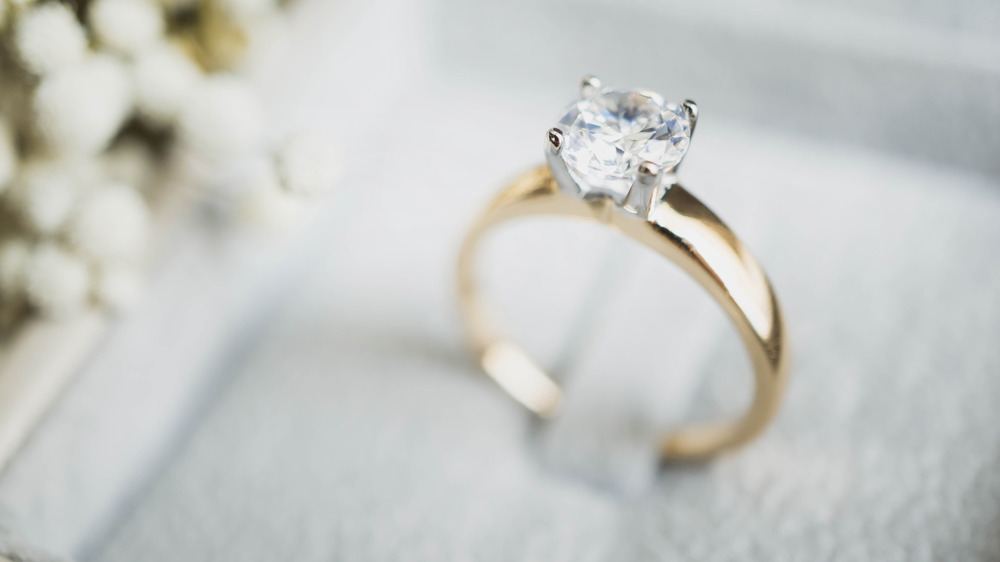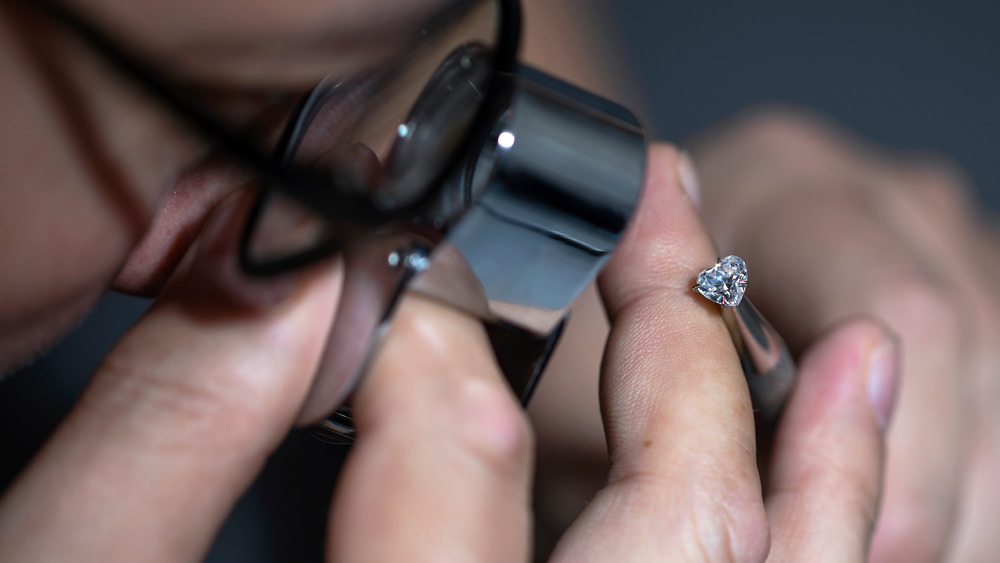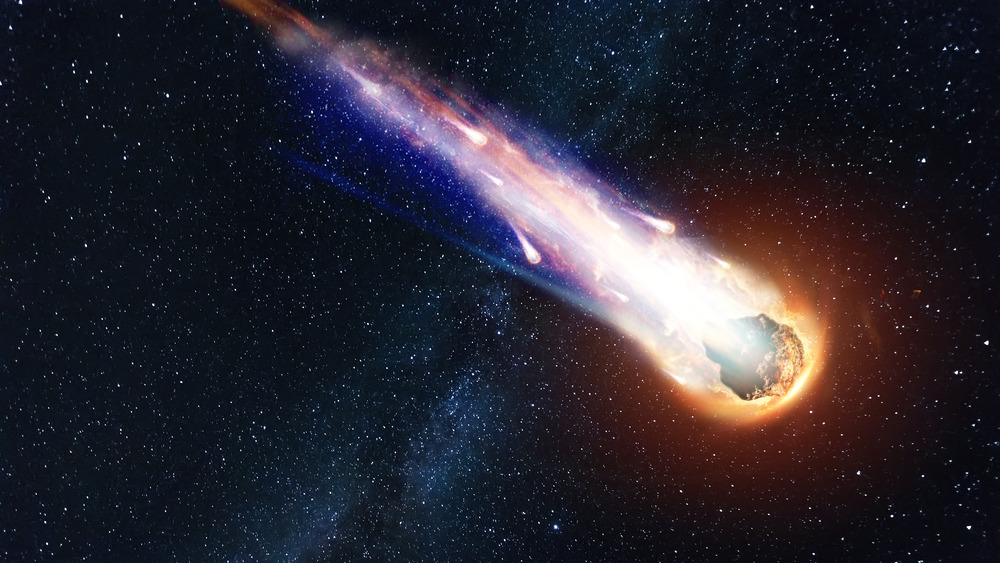Myths You Shouldn't Believe About Diamonds
What myths shouldn't you believe about diamonds? And what comes to mind when you think of diamonds? Do you automatically land on engagement rings and sparkly tiaras? Perhaps you think of Marilyn Monroe's dazzling performance in Gentlemen Prefer Blondes? Or do you ponder the ethics of diamond mining and the way it impacts both people and the environment?
Though diamonds have been around for centuries, they seemed to have retained their sense of enigma. Once reserved solely for royal family jewelry and trinkets for the ultra-rich, diamonds are now worn by the masses. The Atlantic reports that diamonds are almost synonymous with love and engagements now, thanks to a well-executed marketing campaign. And whether you love them or hate them, you have to admit that diamonds are pretty spectacular.
That being said, how much do you really know about diamonds? And most importantly, how much of what you think is true is actually a myth? We've done some research and engaged in some serious diamond myth-busting to bring you the real truth about these sparkly stones. Read on to find out what is and isn't true about diamonds.
All diamonds were created by Mother Nature
For a long time, all diamonds were created solely by Mother Nature. With technology, however, came new possibility, which certainly proved to be a game-changer for the diamond industry.
The Guardian reports that several companies (including Clean Origin) now specialize in lab-created diamonds. Alexander Weindling, who co-founded Clean Origin, was actually born into a family of diamond merchants. He rose up the ranks in the family business before leaving it to pursue a more ethical, climate-friendly way to produce diamonds.
Lab-grown diamonds look extremely similar to mined diamonds, so much so that even experts in the industry struggle to tell the difference between the two when examining them with the naked eye. This might be why lab-grown diamonds all have "LG" inscribed at the bottom. They're produced by mimicking the natural process by which mined diamonds were formed: by placing a tiny fragment of diamond inside a sealed area, and heating it to around the temperature of the surface of the sun, all while exposing it to a number of specific gasses. This reportedly adds "layers to the diamond over a number of days."
Diamonds are rare
You'll be forgiven for assuming diamonds are rare. After all, De Beers Consolidated Mines, Ltd, which was the former monopoly that ruled the diamond industry, led marketing campaigns that created the illusion of rarity and value in order to increase sales, according to The Atlantic.
In actual fact, diamonds aren't nearly as rare as they are marketed to be. They certainly might have been a few centuries ago, but then expansive diamond mines were uncovered in South Africa in 1870. Big names in the mining industry feared the once-rare diamond would be reduced to a mere semi-precious stone, so they banded together to birth De Beers Consolidated Mines, Ltd, and influence the perceived value of diamonds. And how did they do this, you ask? They increased the demand for diamonds through clever marketing, and also controlled the supply.
Many diamond mines have been discovered since then, in countries including Australia, so diamonds are actually even less rare now than they were back then. So don't be fooled by the advertising campaign — though diamonds are definitely stunning, they might not actually be as rare as the diamond industry claims they are.
The most flawless diamonds are naturally made
Natural isn't always best. Advances in technology have paved the way for humans to recreate and improve some of Mother Nature's greatest inventions, and this is certainly true of diamonds.
When the production of lab-grown diamonds first got underway, the stones produced weren't too flashy. Gizmodo reports that the lab-grown stones of the '70s were small, a little yellow, and full of impurities. As technology advanced, however, so did the quality of lab-grown diamonds. Nowadays, a method called chemical vapor deposition (CVD) is used to produce lab-grown diamonds. The method is actually thought to mimic "how diamonds might form in interstellar gas clouds." The best thing about this particular method of lab-grown diamond production is that it is "easier to control impurities and make diamonds with very high clarity."
The high temperature high pressure (HPHT) method, on the other hand, involves carbon being exposed to extreme pressures and tremendous temperatures in order to form a diamond. This method is the oldest lab-produced diamond technique, and is known to be faster than the CVD method. It is reportedly easier to produce clearer diamonds with the HPHT method.
All diamonds are white
If you've done research on diamond engagement rings, you're probably aware that colorlessness can equal value. Knowing this, it's easy to presume that all diamonds are white. However, brace yourselves for some mind-blowing news: this isn't true.
According to the Gemological Institute of America (GIA), diamonds actually come in a wide array of colors. These diamonds are aptly named "fancy color diamonds," and they seem to come in almost every color of the rainbow. GIA reports that "very slight color differences can have a big impact on value." Interestingly, some colored diamonds, like yellow ones, seem to be available in "a wide range of saturations," while other colored diamonds (like blue) do not.
Diamonds with blue or red hues are actually considered extremely rare. In fact, the most expensive diamond in the world is a "blue moon" diamond. Fancy green diamonds are also hard to come across, are often light in color, and sometimes include a tinge of gray and brown. Brown and yellow diamonds are the first and second most common fancy color diamonds, and those who prefer desaturated shades will be happy to know that black and grey diamond options exist as well.
Traditional white diamonds are the most valuable gems around
Diamonds are expensive. But contrary to popular opinion, white diamonds are not the most valuable gems around. In fact, Forbes reports that coming in at around $15,000 per carat, they are only the fifth most valuable gem. The prize for most expensive gem goes out to red diamonds, which cost a hefty $1 million per carat. There are reportedly fewer than 30 of these stunning stones in existence, and they are thought to be mostly under half a carat in size. The largest, however, is an impressive 5.11 carat in size, and was sold for about $8 million back in 2011.
Taaffeite, which is a very rare mineral that was only actually discovered in 1945, is considered the second most valuable gem. Just one carat will set you back around $35,000, and it's known to be discovered in "alluvial deposits" in both Sri Lanka and Tanzania. Next up is the very rare Grandidierite, which costs roughly $20,000 per carat, and was first found in Madagascar in the early 1900s. Even Serendibite, which can be found in Sri Lanka and Myanmar, is a little more valuable than the traditional white diamond.
Diamonds last for all eternity
Remember the James Bond film Diamonds Are Forever? Though the movie is captivating, the title got one thing very, very wrong: diamonds, just like most things in life, are sadly not capable of lasting forever.
This doesn't mean you need to start making alternate plans for the engagement ring of your dreams, though. According to West Texas A&M University's website, while diamonds are capable of degrading over time, this doesn't happen quickly. Diamonds and graphite are both made of the same type of atom — carbon — arranged in different ways. The atom arrangement can reportedly alter over time to replicate the arrangement found in graphite, thereby turning beautiful, sparkling diamonds into graphite stones. Thankfully, this only occurs when there's some sort of very intense heat applied to diamonds.
If you're just planning on wearing your diamonds as jewelry, they're capable of lasting "millions to billions of years" — a long time, but not quite forever.
Diamonds hold onto their value
Those who believe diamonds hold value will be disappointed to know that this is, in fact, a myth. Diamonds do depreciate in value immediately after purchase, just like other expensive goods including wedding dresses, cars, and smartphones.
What's the real reason why your diamonds aren't valuable? The Guardian reports that one jilted woman, who wanted to sell her engagement ring after finding out her husband had been cheating on her, was horrified to find out that her local jeweler was not prepared to buy it for any more than £50, even though the ring originally cost £1000. Additionally, when one of the newspaper's writers took her 0.40 carat diamond ring (which originally cost £1,200) to a jeweler, she was told that her diamond essentially has no value because of its size. How depressing!
Fortunately, there are some tips for those hoping to purchase a diamond. Diamonds graded G or H will likely give you the best value of money. Vintage Victorian and art deco rings reportedly hold value a little better than modern rings. "The rarer the piece, the more likely it will hold its value," jeweler Vincent Taylor told the publication.
A diamond must appear in any worthy engagement ring
Did you know that in the 1930s, diamonds rarely appeared in engagement rings? Though many might assume diamonds have always been synonymous with engagements (and love), this actually a myth — and a cleverly crafted one at that.
Nowadays, around three out of every four American brides-to-be receive a diamond engagement ring, according to The Atlantic. This is exactly what De Beers hoped would happen when they recruited a New York ad agency to run a marketing campaign encouraging men to give their beloved a diamond engagement ring, all the way back in 1938. The marketing campaign, and the ones they followed, worked. "We spread the word of diamonds worn by stars of screen and stage, by wives and daughters of political leaders," the agency explained in 1948.
Lovers of colored stones (and those with tighter budgets) will likely be delighted to hear this news. Diamonds are in no way compulsory for engagements rings — if you prefer a different gem, or don't want your significant other to fork out a small fortune for a diamond next time they're at Kay Jewelers, there are other options available for you.
With diamonds, larger carat weight is always better
Diamonds with a larger carat weight often cost more than their smaller counterparts, but that doesn't necessarily mean they're better, according to the Gemological Institute of America's website.
If you've done a little research on diamonds, you will know that the four Cs (carat weight, clarity, color, and cut) are what defines the value and quality of a diamond. Carat weight is the global standardized measurement of the weights of gems including diamonds. A single carat reportedly weighs around 0.2 grams.
While carat weight is important, so are the other Cs; color, cut and clarity are just as important as weight. There's no point owing a giant diamond if it isn't bright and sparkly, right? If you agree, you need to make sure you're purchasing a diamond with a highly-rated cut, as cut style reportedly affects a diamond's "visual pizazz". That's right, your ring's diamond cut says a lot about you! Similarly, color grade and clarity become very important if you're purchasing an emerald-cut diamond in particular, because this cut isn't great at hiding inclusions. Size isn't everything, ladies!
For more about cuts, here's every type of diamond cut explained.
Diamonds don't chip
While it's true that diamonds are the hardest natural mineral known to humankind, that unfortunately doesn't mean they are protected from chips and scratches. According to the Gemological Institute of America's website, the durability of a gem is measured by examining three properties: hardness, toughness, and stability. Diamonds are renowned for their hardness thanks to their "very compact crystal structure." They are also considered to be incredibly stable and are not vulnerable to acids. While diamonds are able to tolerate higher temperatures better than a lot of other gems, they're capable of becoming damaged if exposed to extreme temperatures. Thankfully, a hot summer day won't have any effect on these sparkly stones.
Unfortunately, diamonds aren't as tough as some of us might assume. Yes, they are tougher than a lot of materials, but they can chip and break if subjected to strong impact, too. This means that if you accidentally hit your hand against a hard surface while wearing a diamond ring, you can actually risk damaging your sparkler. Be alert but not alarmed, because the weaker areas of diamonds are often "set with prongs to protect the corners from chipping."
Natural diamonds are better for the environment than their lab-grown cousins
There appear to be negative and positive environmental arguments for both lab-grown and naturally-formed diamonds, so it's unlikely that natural diamonds are better than their lab-grown counterparts.
According to The Guardian, lab-grown diamonds result in far less environmental damage than their mined counterparts do. The publication revealed that there is now a giant 1.2km hole where diamonds have been mined since 1950 in Siberia, which might soon impact the town located nearby. Lab-grown diamonds aren't really capable of causing that kind of impact. However, they are known to cause "a significant output in carbon pollution" if they are produced using fossil fuels. This means both types of diamonds aren't great for the environment.
While lab-grown diamonds can be produced to look as impressive as mined diamonds, they reported come with a much smaller price tag too. According to The Guardian, an "nine-carat cushion cut diamond", which would cost at least $5 million if it was mined, would only cost around $200,000 if lab-grown. If you're concerned about value for money, perhaps lab-grown diamonds are the better option of the two.
Diamonds can't be bent or stretched
Knowing diamonds are the hardest mineral in the world, you'll be forgiven for thinking they can't be bent or stretched. In actual fact, however, this's not true at all. According to Science Alert, bulk-form diamonds only have very, very small amounts of flexibility — one percent to be exact. However, scientists discovered through experimentation that this increases to nine percent when examining tiny diamonds that are "in nano-needle form."
While this isn't much use when it comes to shiny jewelry, this discovery is reportedly quite significant for the scientific and tech communities, as it could pave the way for new ways to "deliver drugs into cancer cells", and design more effective data storage technology.
It might be hard to believe for those of us who aren't involved in the scientific community, but diamonds are actually quite popular when it comes to pursuits such as "biosensing and bioimaging equipment, drug delivery, next-generation hard drives, optomechanical devices, and super-strong nanostructures." They were even used to create a microwave laser that is thought to be useful for "medical scanners and security scans at airports." There's certainly more to diamonds than meets the eye!
Diamonds are only formed on Earth
Can you believe the fact that diamonds aren't only formed on Earth? The myth that they are might have been an undeniable truth for a very long time, but scientists have discovered that some meteorites that landed on Earth actually contained small diamonds.
According to BBC, a meteorite was tracked and identified before it hit earth for the first time ever back in 2008. This gave meteorite hunters the chance to visit the sight, in Sudan's Nubian Desert, soon after impact. The meteorite had exploded on impact, as they often do, and those inspecting the fragments noticed diamonds within them.
Scientists studied the fragments and hypothesized that diamonds of that size might have formed within a large rock — or on a planet. They believe the meteorite might have been part of a planet that shattered many, many billions of years ago. Could this mean there are other planets across the universe with an untapped supply of diamonds? Only time (and extensive scientific research) will tell.
Diamonds are the only materials made completely of carbon
Though diamonds are incredibly unique (and undeniably beautiful), they aren't the only material composed completely of carbon. There's one other material made solely of carbon that is way more common (and way less expensive) than diamonds: graphite. That's right, the stuff you find in pencils is made of the exact same type of atom as diamonds. How is this possible, you ask? Well according to Scientific American, though both materials are made of carbon atoms, these atoms are arranged very differently in each material.
When examining diamonds, scientists have found that each carbon atom within is physically linked to four others, creating a tetrahedron of sorts. This is reportedly what creates the hardness, strength, and durability diamonds are known for.
Carbon atoms in graphite, however, are layered and interact with each other in two ways, which influence the material's physical properties. This is why graphite can be used in pencils, and is softer and more slippery than diamonds.
